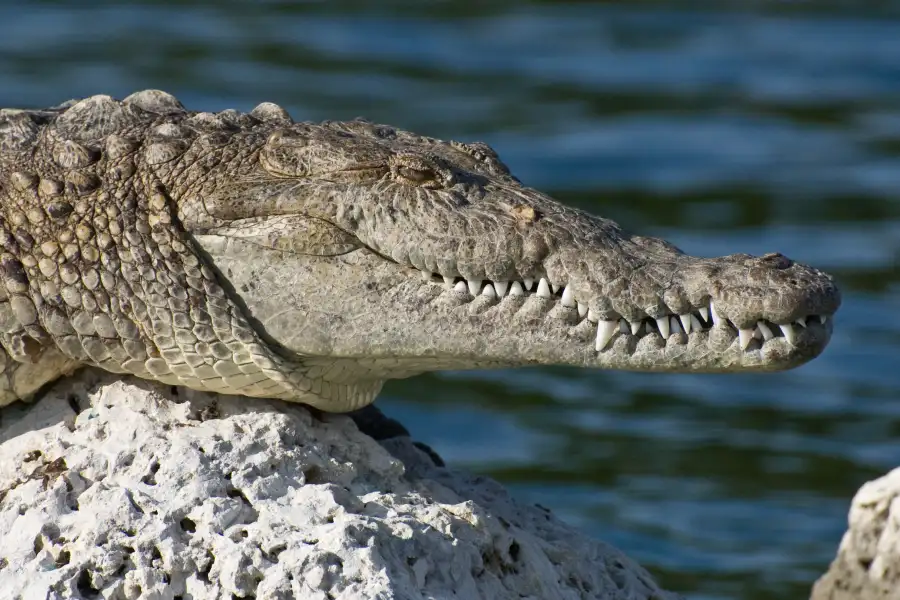Humans (average) | African Elephants | |
|---|---|---|
| Weight | 100-200 lbs (45-91 kg) | Up to 14,000 lbs (6,350 kg) |
| Lift Capacity | 50-70% of body weight | Around 25% of body weight |
| Trunk Strength | Can lift up to 100 lbs (45 kg) | Can lift objects weighing over 500 lbs (227 kg) |
| Physical Feats | Unable to uproot trees or move boulders | Can uproot trees and move boulders with ease |
| Force Exertion | Unable to exert several tons of force | Can exert several tons of force while charging |
Elephants are known for their incredible strength and size, but have you ever wondered how they compare to the average person in terms of strength?
Despite humans being significantly lighter than elephants, we have the ability to lift a greater percentage of our own body weight compared to these magnificent creatures.
However, elephants still reign supreme due to their sheer size and power.
In fact, they can lift objects weighing over 500 pounds with just their trunks! In this post, we’ll explore the differences between human and elephant strength and why elephants are considered one of the strongest animals on earth.
As humans, our body weight ranges from around 100-200 pounds (45-91 kilogram) on average. This means that even the strongest among us would struggle to lift anything close to an elephant’s weight of up to 13,000 pounds or 5,897 kilograms.
However, when it comes down to lifting a percentage of our own body weight, humans come out on top. The average person can lift around 50-70% of their own body weight while an elephant can only manage around 25%.
Despite this advantage for humans in terms of lifting capacity relative to body weight, elephants still possess immense strength that far surpasses what any human could achieve.
Elephants use their trunks as an extension of their bodies which allows them to perform feats that would be impossible for a human.
They can uproot trees and move boulders with ease – tasks that would require multiple people or heavy machinery for humans.
Furthermore, elephants’ size also plays a significant role in their overall strength. Their massive bodies give them an incredible amount of force behind every movement they make.
For example, when charging at full speed, an elephant can exert a force equivalent to several tons – something no human could ever hope to match.
Elephant Strength: Are They the Strongest Mammals in the World?
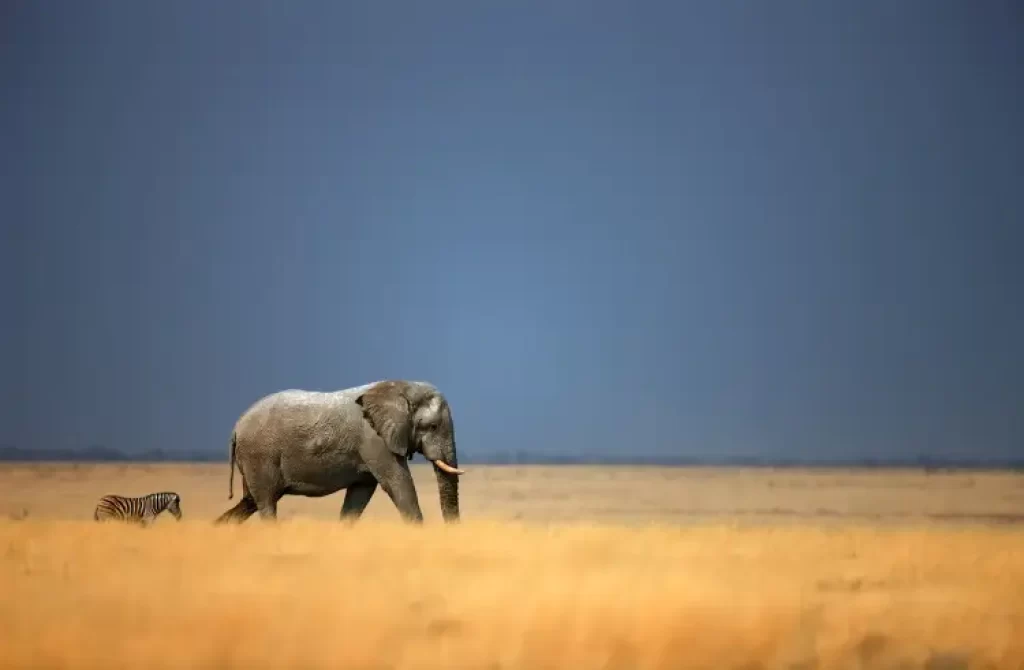
African elephants are the largest land mammals in the world, weighing up to 6,350 kilograms or 14,000 pounds and standing over 3 meters or 10 feet tall at the shoulder.
The strength of an adult elephant is equally impressive as their size. They can lift up to 272 kilograms or 600 pounds with their trunks alone and use their powerful tusks to push down trees.
This immense strength is due to their muscular trunks, which contain over 100,000 muscles, as well as their massive bodies, which enable them to generate incredible force.
However, despite their incredible strength, elephants are not the strongest mammals in the world.
The blue whale holds that title, with a strength estimated to be ten times greater than that of an elephant.
The blue whale’s strength comes from its massive size – it can weigh up to 200 tons – and its ability to move through water effortlessly. While elephants are strong on land, they cannot match the power of a blue whale in water.
That being said, African elephants are still incredibly strong animals. They use their strength for a variety of tasks such as digging for water or roots or moving fallen trees out of their path.
Elephants also use their strength during mating rituals when males compete for females by pushing against each other with their tusks.
In addition to their physical strength, African elephants are also known for their intelligence and emotional depth.
They have been observed mourning the loss of family members and showing compassion towards other animals in need. This combination of physical prowess and emotional intelligence makes them truly remarkable creatures.
It is important to note that while African elephants may be strong compared to other land mammals, they are still vulnerable to human interference such as poaching and habitat destruction.
These threats have caused a decline in elephant populations across Africa over the past few decades.
To combat these issues, conservation efforts have been put into place around the world. These efforts include anti-poaching patrols, habitat restoration projects, and education programs aimed at raising awareness about elephant conservation.
Understanding Elephant Strength: Calories and Defensive Power
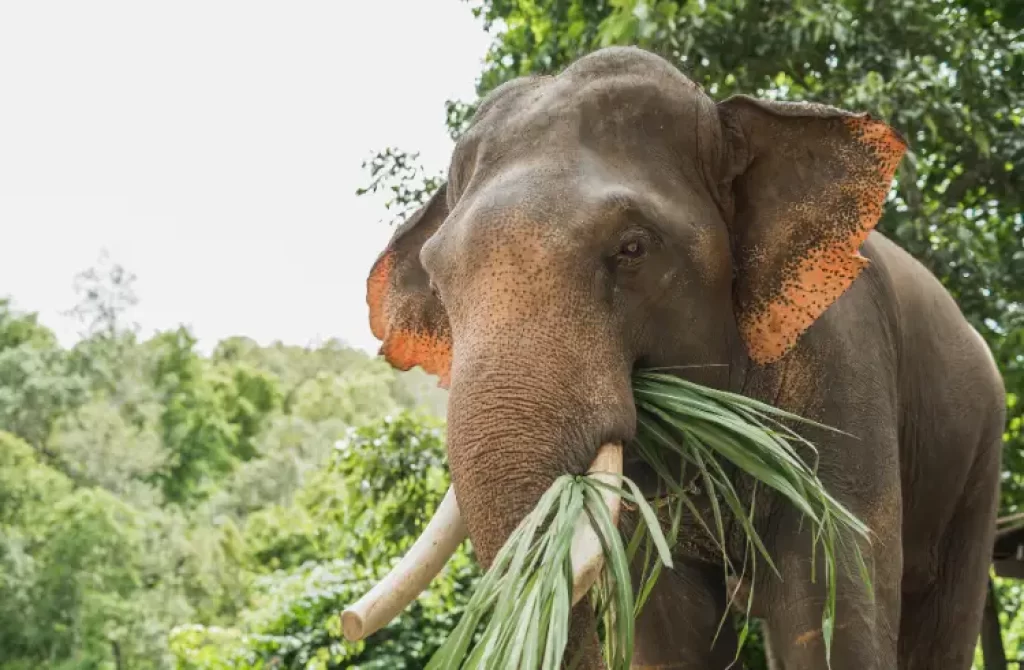
Elephants are known for their incredible strength and size, which can make them intimidating to many predators. However, their strength is not just limited to their physical size.
Elephants have a strong defense mechanism that allows them to protect themselves from predators and other threats in their environment.
One of the most notable features of an elephant’s defense system is its thick skin. In some areas, an elephant’s skin can be up to 2.5 cm thick, providing a natural armor that helps absorb blows and protect against sharp objects.
This thick skin also helps regulate an elephant’s body temperature by retaining moisture and keeping the animal cool in hot environments.
In addition to their physical defenses, elephants also have powerful vocalizations that they use to communicate with one another and warn of potential danger.
These vocalizations include trumpeting calls, rumbling sounds, and low-frequency vibrations that can travel long distances through the ground.
Elephants also have the ability to charge at high speeds when threatened, making them formidable opponents even for larger predators such as lions or crocodiles. Their sheer size alone can be enough to intimidate would-be attackers.
Despite their impressive defensive capabilities, elephants are still vulnerable to human threats such as poaching and habitat destruction.
According to the World Wildlife Fund (WWF), African elephants are listed as “vulnerable” on the International Union for Conservation of Nature (IUCN) Red List due to ongoing habitat loss and poaching for ivory.
Conservation efforts are crucial in protecting these magnificent animals from extinction. Organizations like WWF work tirelessly to protect elephant habitats and reduce human-elephant conflict through education programs and community outreach initiatives.
Striking Force of Elephants: Comparing to Whales and Tigers
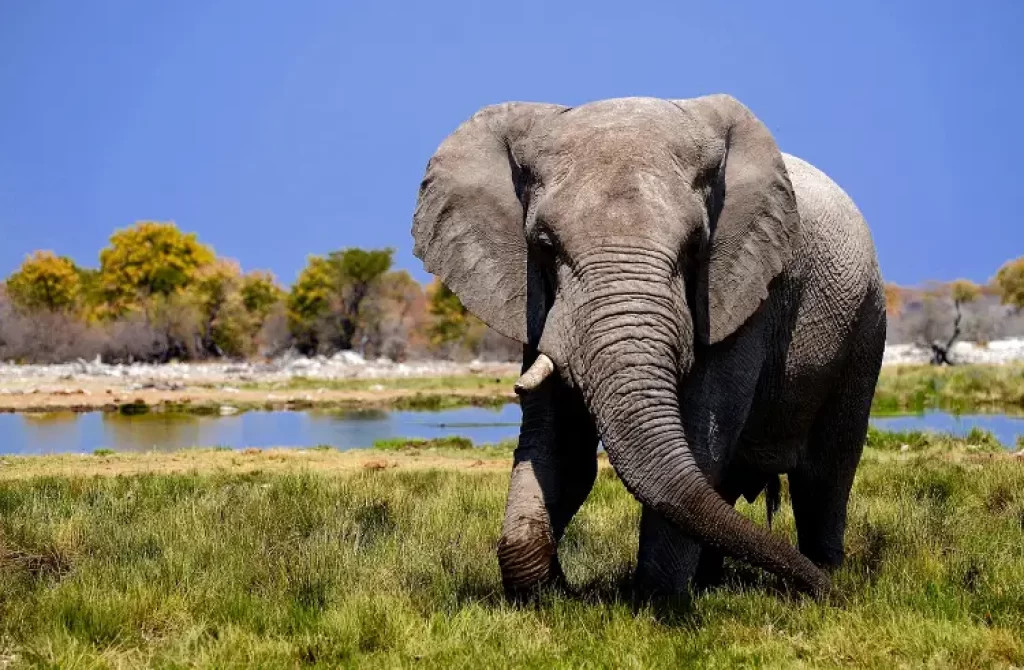
Elephants are known for their incredible strength and power. Their massive bodies and trunks allow them to exert a surprising amount of force, making them one of the strongest animals on the planet. But how do they compare to other powerful species like tigers and whales?
Biting Force: Elephants vs. Tigers
Both elephants and tigers are incredibly strong. Elephants have an incredibly strong bite force, with their jaws capable of exerting a pressure of up to 200 pounds per square inch. This is more than enough to crush a human skull.
Tigers, on the other hand, have a bite force that is equally impressive. According to research conducted by National Geographic, a tiger’s bite force can reach up to 1,050 pounds per square inch, which is more than twice as powerful as a lion’s bite.
While both elephants and tigers possess impressive biting force, it’s important to note that they use this strength in different ways.
Elephants use their powerful jaws for crushing tough vegetation and breaking branches off trees while tigers use their sharp teeth for hunting prey.
Swipe Force: Elephants vs. Whales
In addition to their strong jaws, elephants also possess an impressive swipe force thanks to their massive bodies and trunks. A single swipe from an elephant’s trunk can easily knock down trees or even flip a car.
Whales, on the other hand, are known for their incredible lifting power rather than swipe force. Some species of whales can lift up several tons of weight with ease using only their powerful tails.
It’s important to note that while whales may not possess the same kind of swipe force as elephants, they are still incredibly strong animals in their own right.
Comparing Strength Across Species
When comparing strength across species like elephants, tigers, whales or lions there are many factors that come into play such as size and weight differences between these animals. However, it’s clear that all of these species possess incredible strength and power.
For example, bears are known for their incredible strength and power as well. According to research conducted by the National Park Service, a grizzly bear can exert a force of up to 1,200 pounds per square inch with its bite. This is more than six times as powerful as a human bite.
In addition to their biting force, bears also possess impressive swipe force thanks to their massive bodies and strong claws. A single swipe from a bear’s paw can easily knock down an adult human.
Elephant Tusks and Trunk Strength
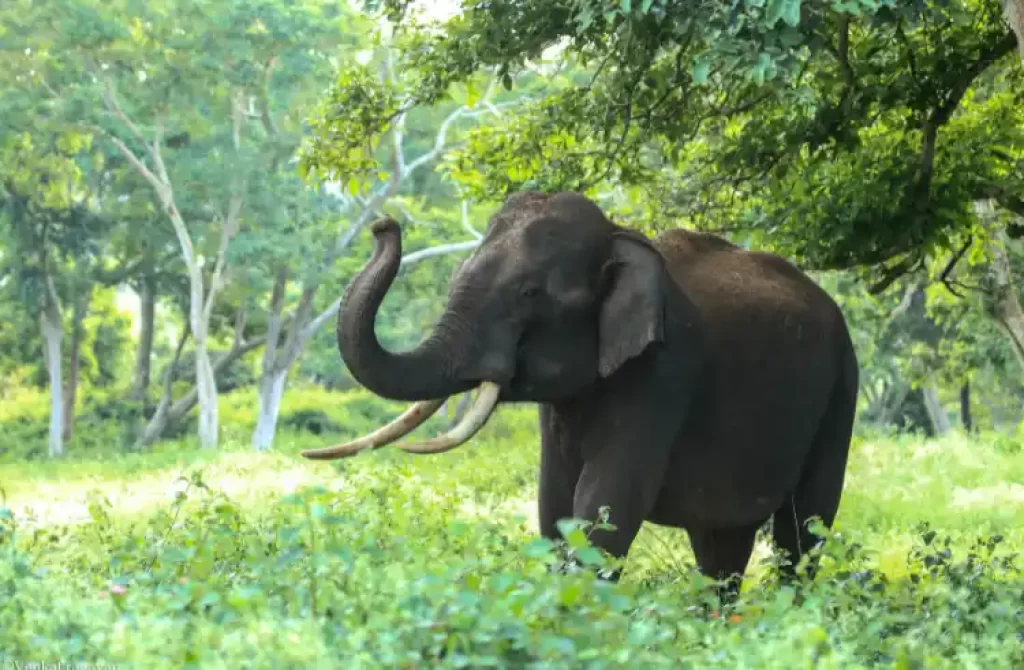
Elephants are one of the most majestic creatures on earth, known for their incredible size, strength, and intelligence.
One of the most distinctive features of an elephant is its tusks. These elongated incisor teeth can grow up to 10 feet long and weigh over 100 pounds each.
While many people may think that tusks are just for show, they actually serve a variety of important purposes.
Tusks are used by elephants for digging for water and stripping bark from trees. They also play a crucial role in defending against predators.
When threatened, an elephant will use its tusks to charge at the predator, using them as weapons to protect itself and its herd.
In addition to their impressive tusks, elephants also have incredibly strong trunks. The trunk is made up of over 40,000 muscles and can lift up to 700 pounds. Elephants use their trunks for a wide range of tasks, including grasping food and water,
communicating with other elephants through touch and sound vibrations, and even playing with objects like sticks or rocks.
The strength of an elephant’s trunk is due in part to the fact that it contains no bones – only cartilage and muscle tissue. This allows it to be incredibly flexible while still maintaining its strength.
But it’s not just their tusks and trunks that make elephants so powerful – they also have incredible brute strength in their hind legs. This allows them to push down trees and move heavy objects with ease.
Unfortunately, despite all this natural strength and power, elephants are facing a serious threat from human activities.
The demand for ivory has led to illegal poaching of elephants for their tusks. This has caused a decline in elephant populations around the world and threatens the survival of these magnificent creatures.
It’s estimated that between 2010-2012 alone, over 100,000 African elephants were killed by poachers for their ivory. This is a staggering number, and it’s clear that something needs to be done to protect these animals from further harm.
Many organizations are working tirelessly to combat the illegal ivory trade and protect elephant populations.
For example, the International Fund for Animal Welfare (IFAW) has been working with local communities in Africa to promote conservation efforts and reduce demand for ivory.
In addition, many countries have implemented stricter laws and penalties for those caught poaching or trafficking in ivory. These measures are helping to make a difference, but there is still much work to be done.
Ultimately, it’s up to all of us to do our part in protecting elephants and other endangered species. Whether through supporting conservation efforts financially or simply spreading awareness about the issue, every little bit helps.
Unarmed Human vs. Elephant: Who Would Win in a Fight?
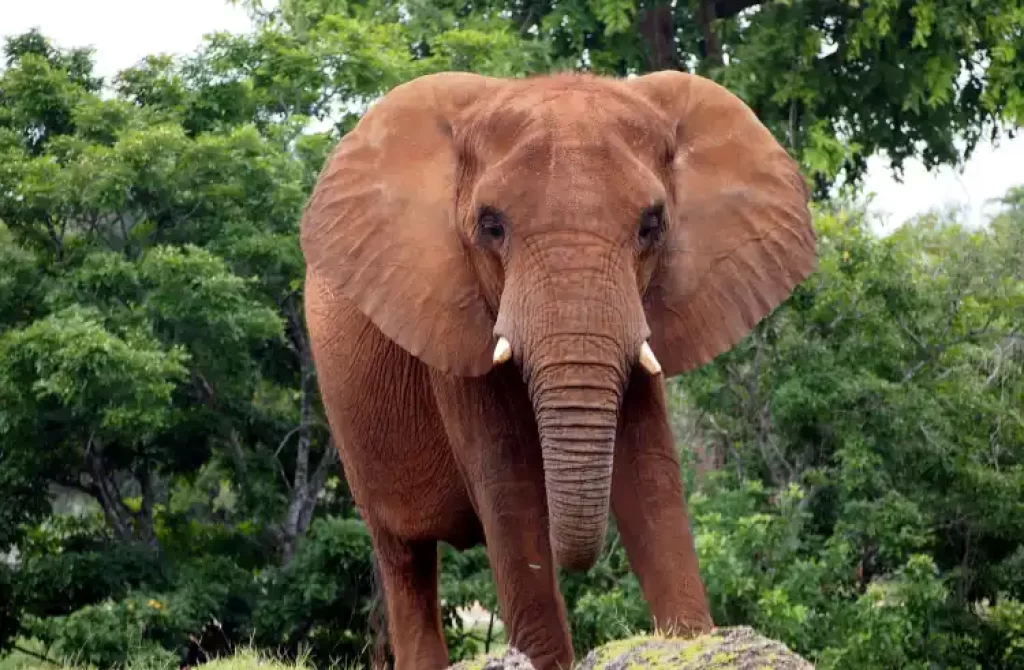
The thought of an unarmed human going up against an elephant in a fight is a scary one. It’s not just because elephants are known to be aggressive and territorial, but also because they are incredibly strong animals that can easily overpower humans with their sheer size and weight.
The Size and Strength of Elephants
An adult elephant can weigh anywhere from 5,000 to 14,000 pounds, depending on the species. In comparison, the average weight of an adult human is around 150-200 pounds.
This means that even a well-built human would be no match for an elephant in terms of physical strength.
In addition to their weight, elephants have powerful trunks that they can use as weapons. An elephant’s trunk is made up of over 100,000 muscles and can lift objects weighing up to 600 pounds. Imagine what it could do to a person!
The Danger of Approaching or Provoking Elephants
It’s important for people to understand the danger of approaching or provoking elephants.
These animals are wild and should be respected from a safe distance. Even if you don’t intend to harm them, your presence could still provoke them into attacking.
There have been numerous reports of people being injured or killed by elephants while trying to take selfies or get too close for comfort. In fact, according to National Geographic, elephants kill around 500 people every year in Africa alone.
How Humans Can Protect Themselves
If you find yourself in close proximity to an elephant, it’s important to remain calm and avoid making sudden movements or loud noises that might startle the animal. If possible, try to slowly back away while keeping your eye on the elephant.
If you’re in a vehicle when you encounter an elephant, stay inside with the windows rolled up until it moves away.
And if you’re visiting an area where there are wild elephants present, always listen carefully to any safety instructions provided by local guides or park rangers.
How strong is elephant than human?
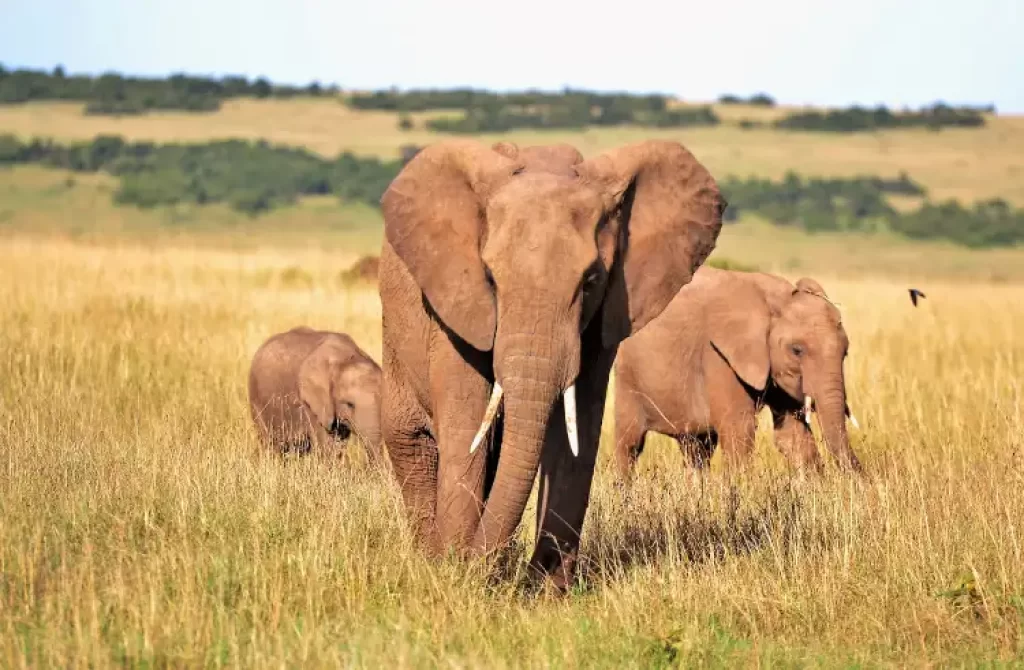
Elephants are much stronger than humans. An adult elephant can weigh anywhere from 5,000 to 14,000 pounds, while the average weight of an adult human is around 150 to 200 pounds.
This difference in size and strength means that elephants can easily overpower humans and are capable of feats of strength that are impossible for humans to match.
Additionally, elephants have a lot of muscle mass and are able to use their trunks, tusks, and weight to their advantage, making them incredibly strong animals.
Note It’s important to remember that elephants are wild animals and should always be treated with caution and respect.
The Absolute Strongest Animals on Earth: Harpy Eagles, Crocodiles, and Elephants
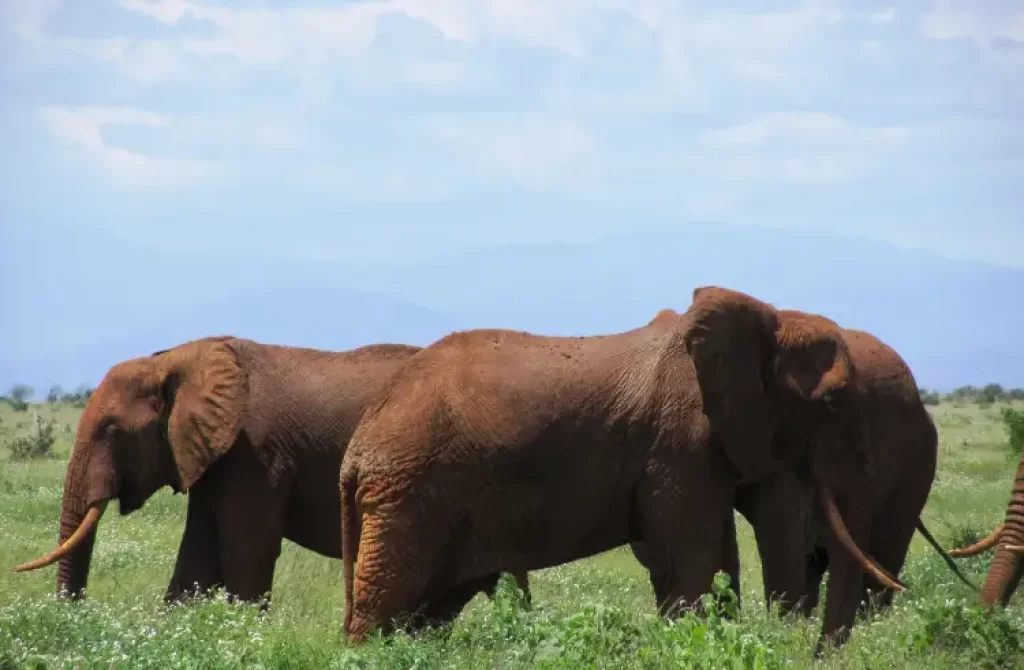
Harpy Eagles: The Strongest Birds on Earth
Harpy Eagles are among the strongest animals on Earth. These birds of prey have a grip strength of up to 500 pounds per square inch, which is strong enough to crush a human skull. The Harpy Eagle’s talons are also incredibly sharp and can easily tear through flesh.
Harpy Eagles are native to Central and South America and are known for their powerful hunting abilities.
They primarily hunt monkeys, sloths, and other small mammals that live in the forest canopy. Their impressive grip strength allows them to catch and carry prey that weighs up to half their body weight.
Despite their incredible strength, Harpy Eagles are considered vulnerable due to habitat loss and hunting. Conservation efforts have been put in place to protect these magnificent creatures, but they still face numerous threats.
Crocodiles: The Strongest Reptiles on Earth
Crocodiles are another animal that is known for its incredible strength. These reptiles have a bite force of up to 3,700 pounds per square inch, which is stronger than any other animal on Earth.
A crocodile’s bite is so powerful that it can easily crush bones and tear apart flesh.
Crocodiles are found in many parts of the world, including Africa, Australia, and Asia. They are apex predators that feed on fish, birds, mammals, and even other crocodiles.
Despite their fearsome reputation as man-eaters, crocodiles generally avoid humans unless provoked or threatened.
Like Harpy Eagles, crocodiles also face numerous threats from habitat loss and hunting. Many species of crocodile are endangered or critically endangered due to human activities such as poaching and pollution.
Elephants: The Strongest Land Animals on Earth
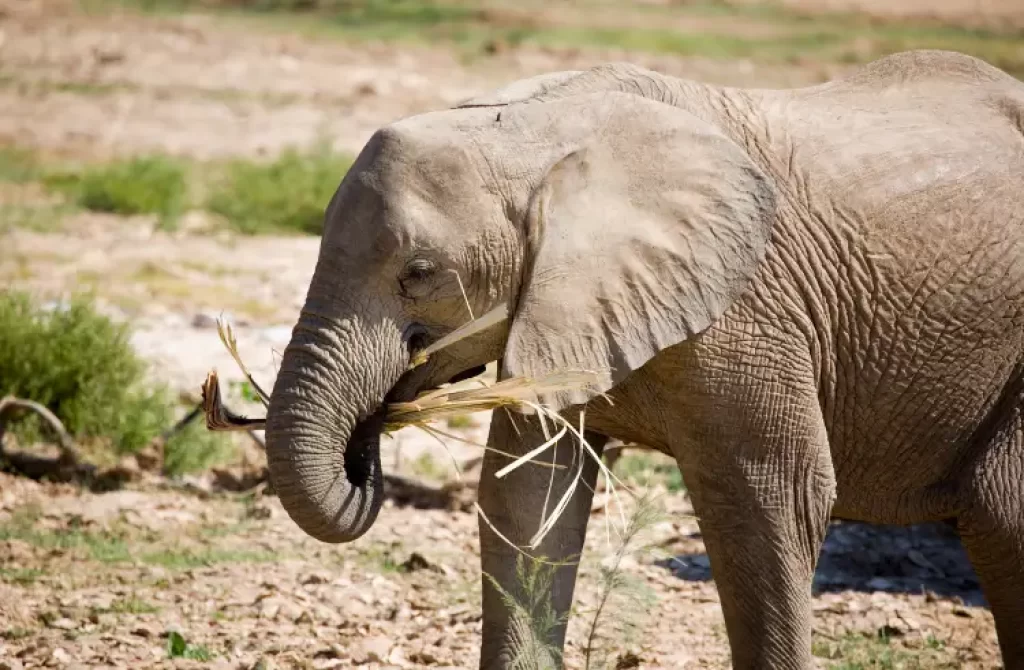
Elephants take the crown as the strongest creatures on Earth. These massive animals can weigh up to 22,000 pounds and are capable of carrying up to 9,000 pounds on their backs. Elephants are also incredibly strong and can push down trees with their sheer strength.
Elephants are found in Africa and Asia and are known for their intelligence and social behavior. They live in herds led by a matriarchal figure and communicate with each other using a variety of sounds and gestures.
Elephants also have an incredible memory that allows them to remember other elephants they have encountered years ago.
Despite their strength, elephants face numerous threats from habitat loss, poaching, and human-wildlife conflict. Conservation efforts have been put in place to protect these magnificent creatures, but much more needs to be done to ensure their survival.
Rhinoceroses: Formidable Creatures
While not as strong as Harpy Eagles, crocodiles or elephants, rhinoceroses are still formidable creatures that deserve mention. These massive animals can weigh up to 2,000 pounds and can charge at speeds of up to 35 miles per hour. Rhinoceroses use their horns as weapons against predators or other rhinos during territorial disputes.
Rhinoceroses are found in Africa and Asia and are known for their tough skin that is covered in thick folds. Despite this protection, rhinoceros populations have declined dramatically due to poaching for their horns which are believed to have medicinal properties in some cultures.
Humans: The Dominant Species on Earth
While humans may not be the strongest animals on Earth, our intelligence and adaptability have allowed us to become the dominant species on the planet. Our ability to create tools, communicate complex ideas through language, and work together has enabled us to survive in nearly every environment on Earth.
However, our dominance has come at a cost. Human activities such as deforestation, pollution, overfishing, hunting, and climate change have caused irreparable damage to ecosystems around the world. It is up to us to take responsibility for our actions and work towards a more sustainable future.
Gorillas: The Strongest Primates
Gorillas are the strongest primates on the planet. Males can weigh up to 400 pounds and stand at six feet tall, making them an imposing presence in their natural habitat.
Their muscles are incredibly powerful, allowing them to lift heavy objects and prey with ease. In fact, gorillas have been known to lift something as heavy as a car tire effortlessly.
Muscles
The muscles of a gorilla are one of its most impressive features. They have large biceps, triceps, and pectoral muscles that allow them to easily lift heavy objects. These muscles also give gorillas incredible strength when it comes to fighting off predators or competing for mates.
Grip
Gorillas have a strong grip, which they use to hold onto objects and climb trees. This grip is so powerful that they can break branches with their bare hands. It’s also what allows them to carry heavy objects with ease.
Legs
Their legs are also incredibly strong, allowing them to run quickly and jump great distances. Gorillas can reach speeds of up to 20 miles per hour when running on two legs. They use their legs not only for running but also for climbing trees and standing upright.
Diet
While gorillas primarily eat vegetation such as leaves, stems, and seeds, they have been known to hunt small animals like calves and bovines. Gorillas need a lot of food every day due to their size and muscle mass. They spend most of their day eating plants in order to get enough nutrients.
Groups
Gorillas live in groups called troops, which can consist of up to 30 individuals. These troops work together to protect their bodies and food sources from predators like grizzly bears. Gorillas are social creatures that rely on each other for protection and survival.
Gorillas vs. Elephants: who would win?

Size Advantage: Elephants vs. Gorillas
Size does matter. Elephants are much larger than gorillas, with an average weight of 5,500 kg compared to a gorilla’s average weight of 160 kg. This size advantage gives elephants a significant edge in any physical confrontation.
However, it is essential to note that gorillas are not small animals by any means. They are incredibly strong and agile primates that can stand up to six feet tall and weigh up to 400 pounds. Despite their smaller size, they have been known to take down predators such as leopards and crocodiles in the wild.
Strength Advantage: Elephants vs. Gorillas
While gorillas are incredibly strong, with the ability to lift up to 2,000 kg, elephants are even stronger. They can lift up to 9,000 kg with their trunks alone, giving them a clear strength advantage over gorillas.
Elephants’ immense strength allows them to use their tusks and trunk as weapons when threatened or attacked by predators or other animals. The sheer force behind an elephant’s charge can be enough to knock down trees or even buildings.
Defensive Advantage: Elephants vs. Gorillas
Elephants have thick skin that is difficult to penetrate, making them less vulnerable to attacks from gorillas. They also have large tusks that they can use for defense if necessary.
Gorillas may be able to inflict serious damage with their powerful arms and sharp teeth; however, they lack the defensive capabilities of elephants due to their thinner skin and smaller stature.
Intelligence Advantage: Elephants vs. Gorillas
Elephants are highly intelligent animals and have been known to outsmart their opponents in confrontations. They have been observed using tools and working together to solve problems, giving them an intelligence advantage over gorillas.
In contrast, while gorillas exhibit high levels of intelligence, they do not have the same problem-solving abilities as elephants. Gorillas are more likely to rely on brute force and instinct when confronted with a threat.
Speed Advantage: Elephants vs. Gorillas
While elephants may not be as fast as gorillas on land, they are excellent swimmers and can cross bodies of water quickly and easily. This gives them an advantage in situations where they need to escape or pursue their opponent.
Gorillas, on the other hand, are primarily terrestrial animals that do not have the same level of swimming ability as elephants. In situations where water is involved, gorillas may struggle to keep up with their larger counterparts.
Who Would Win?
Given all these advantages, it is clear that elephants would have the upper hand in a physical confrontation with gorillas. However, it is essential to note that such confrontations rarely occur in nature.
In the wild, both animals tend to avoid each other’s territories and habitats. They have different diets and lifestyles that rarely overlap, reducing the likelihood of conflict between them.
Elephants – Back to the Wild | Part 1 – The Orphanage of Elephants (documentary)
Wanna know more about the mighty elephant and it’s strength? If you’re curious about elephants and want to see their incredible strength in action, why not check out a documentary?
One documentary that I highly recommend is ‘Elephants – Back to the Wild‘. This heartwarming documentary follows the journey of orphaned elephants as they are cared for and rehabilitated by dedicated animal experts, with the ultimate goal of releasing them back into the wild.
You’ll get a glimpse into the elephants’ personalities, relationships, and incredible physical abilities. It’s a great watch for anyone who wants to feel inspired by these amazing animals and the humans who work tirelessly to protect and care for them
Some Frequently asked questions
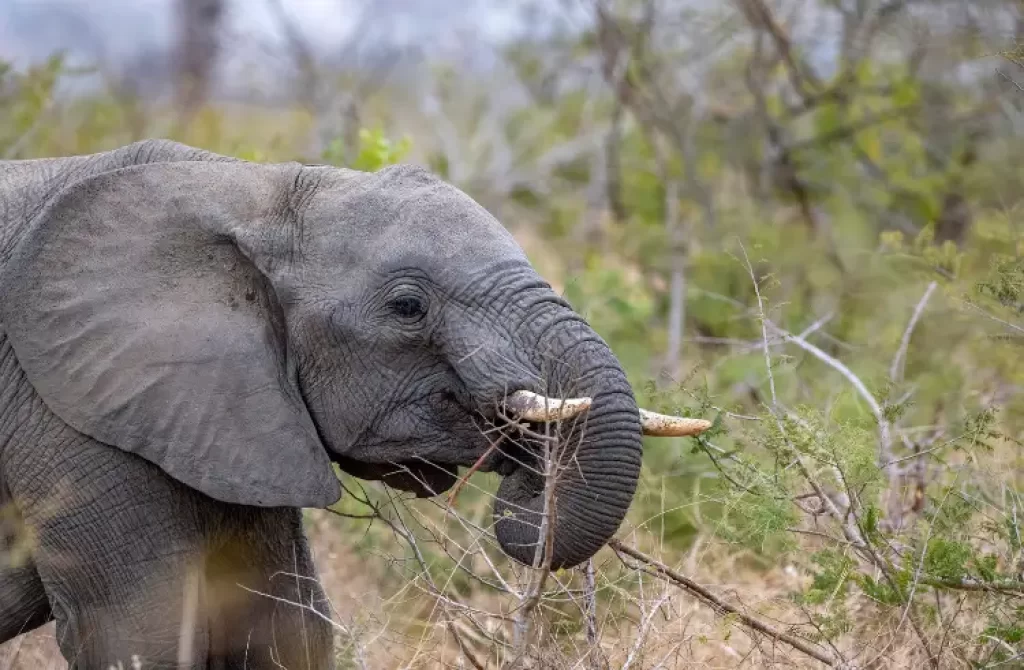
How much can a elephant lift?
The lifting capacity of an elephant depends on various factors, such as the size, age, and sex of the elephant. Generally speaking, an adult African elephant can lift up to 6000 kg (13,227 pounds) using its trunk.
This impressive strength comes from the massive size of the elephant’s muscles and the leverage provided by its trunk, which contains over 40,000 individual muscles.
Elephants use their trunks not only for lifting and carrying heavy objects, but also for many other tasks, such as grasping food and water, and communicating with each other through touch and sound.
What is the IQ of an elephant?
The intelligence of elephants can be measured using the encephalization quotient (EQ), which compares the size of an animal’s brain relative to its body size.
According to Wikipedia, elephants have an EQ range of 1.13 to 2.36, with an average EQ of 2.14 for Asian elephants and 1.67 for African elephants.
The overall average EQ for elephants is 1.88, which is relatively high compared to other mammals. However, it’s important to note that measuring animal intelligence can be complex, and EQ is just one of many factors that contribute to an animal’s cognitive abilities.
What is an elephant’s weakness?
While elephants are powerful and resilient animals, they do have weaknesses. One of their vulnerabilities is their strong attraction to water. In some situations, this weakness can be exploited by humans.
For example, in some training practices, trainers may use water to coax elephants into certain behaviors or movements.
Additionally, elephants can be vulnerable to dehydration in dry environments, making access to water essential for their survival.
Final Thoughts on Elephant Strength
In conclusion, elephants are undoubtedly one of the strongest mammals in the world. Their sheer size and weight alone make them formidable creatures. But their strength goes beyond just their physical appearance.
Elephants have evolved to be incredibly efficient at using their energy, thanks to their unique digestive system that allows them to extract as many nutrients as possible from their food. This gives them the energy they need for both defensive and offensive purposes.
Their tusks and trunks also play a significant role in their strength. The tusks can be used for defense against predators or other elephants, while the trunk is used for everything from picking up objects to fighting.
It’s clear that they are among the strongest in terms of striking force. However, there are other animals that surpass them in certain areas, such as crocodiles with their powerful jaws or harpy eagles with their incredible grip strength.
As for who would win in a fight between an unarmed human and an elephant, it’s safe to say that the outcome would not be favorable for the human.
Elephants have been known to kill lions and even rhinos with ease, so a human would stand little chance against such a powerful creature.
Other related pages
Resources
- National Geographic (https://www.nationalgeographic.com/search?q=elephant%20&location=srp&type=manual) – National Geographic has a wide range of articles and resources on elephants, including information on their strength, behavior, and natural habitats.
- National Geographic Kids (https://kids.nationalgeographic.com/animals/mammals/facts/african-elephant) – This resource is specifically designed for kids and includes fun facts, photos, and videos about African elephants.
- Sciencing (https://sciencing.com/natural-habitat-elephants-6746108.html) – This website provides information on the natural habitats of elephants and their behavior in the wild.

